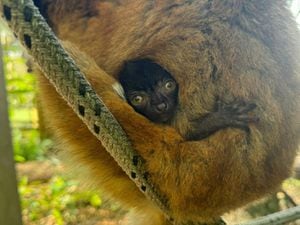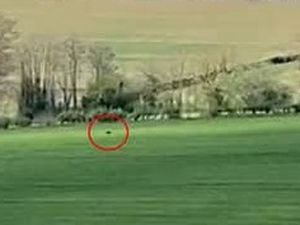Cosmos on camera: A beginner's guide to stargazing
Long, dark winter nights are not everyone’s cup of tea, especially during a lockdown.

But they can provide some spectacular viewing for those who take the time to slow down and look up.
Stargazing is a great way to experience the beauty of the natural world and learn more about the twinkling dots scattered across our night skies.
And it’s easier than you might expect to start exploring the stars, constellations and planets that are visible, provided you know when and where to look.
Paul Murray, from Hadley, Telford, is a keen photographer and stargazer who enjoys helping beginners get the most out of the hobby.
“You don’t need major high-tech gear to start, just a small telescope or pair of binoculars are all you need to get you started.
“I recommend a good pair of binoculars to start with just because you will soon realize the objects in the night sky are always on the move due to the earth’s rotation and using binoculars will make it a bit easier to track objects in the night sky.
“I remember the first time peering at the moon through a pair of dusty old binoculars and seeing all the craters and features in fine detail – from then on, I was hooked,” he tells Weekend.
Once people have got the hang of their binoculars, then they can start exploring more of the night sky and Paul, who also enjoys astrophotography, says they can get a helping hand from technology.
“Nowadays almost everyone has a mobile phone and we can use apps, such as Skyview and Stellarium, which can literally point you in the right direction to view distant objects in the night sky.
“There are lots of mobile apps out there for stargazing also tutorials on YouTube can come in handy if you get stuck on how to use them,” he explains.
The cold nights of winter can bring clearer skies, perfect for stargazing and also photography.
“During the winter months the constellation Orion is the one of the most prominent in the night sky and it holds some of the most colourful objects. The Flame Nebula is part of the Orion Molecular Cloud Complex, a star-forming region that includes the famous Horsehead Nebula.
“The Orion nebula is a cosmic nursery in which stars are being born and on a clear dark night is visible with the naked eye.
“These are good starting points to get you off and running but you can go even further, like me, and start photographing these objects.
“But for this you’re going to need a sturdy tripod and a camera capable of taking long exposure images, you can even use your mobile phone as long as you can attach it to a tripod.
“Then we have star trackers. These motorised devices attach between your tripod and camera and allow the camera to mimic the earth’s rotation so you can capture as much information as possible from the target.
“Without a tracker, a long exposure photograph of the stars could look like this, clearly showing the earth’s rotation,” says Paul.
Stargazers in Shropshire are very fortunate when it comes to viewing the night sky, he tells Weekend.
“Even though Telford has expanded drastically over the years and is now heavily light polluted we still have areas in and around the Shropshire Hills where it is still dark enough to view the night sky.
“From around September onwards, if you are stargazing even a short distance away from the worst light-polluted areas, you can see the galaxy we live in, the Milky Way.
“We see our cosmic home as a milky cascade made up of the billions of stars it contains. From our point of view, most of the stars in this stream are all just too far away – and hence faint – for any one star to be noticed by itself.
“However, their light blends together to give us the wondrous river of light that stretches across the sky. But in truth the Milky Way can be seen all year round, you’ve just got to know where to look but the evenings of autumn are the best time to view this celestial stream.
“Good, dark sky areas to visit, once we get our freedom back, are The Long Mynd, Church Stretton and Titterstone Clee Hill. I’ve taken a few up-and-coming stargazers to these areas to show them around the night sky. Warm clothing and sturdy footwear are advised when visiting these areas. Also take at least two torches and in the cold winter nights a flask of something to keep you warm is really recommended,” explains Paul.
As well as constellations, sky watchers can also be on the lookout for other phenomenon, such as airglow, often made up of green or blue light.
“Sometimes mistaken for the Aurora, airglow is caused by various processes in the upper atmosphere of earth, such as the recombination of atoms, which were photoionized by the sun during the day, and luminescence caused by cosmic rays striking the upper atmosphere.
“Other things to look out for through the year are meteor showers – nature’s fireworks I call them. The next ‘medium’ sized shower is coming up in April. The Lyrid meteor shower – April’s shooting stars – lasts from about April 16 to 25. “At its peak it’s about 10 to 15 meteors per hour. Again, you can find details in meteor shower calendars on some phone apps or online websites.
“From time to time we also get special visits from distant wanderers in the form of comets. These icy balls of dust and rock make for spectacular viewing if they get close enough to the earth.
“As they close in on the Sun, they begin to form a tail which can extend out for millions of miles. We were fortunate last year when we had a close encounter with comet Neowise. It gave me a chance to capture it sailing over Wellington,” Paul tells Weekend.
With stargazing, the more you look, the more you see and Paul says it offers endless opportunities to learn more about our universe.
“As you can imagine we’ve barely scratched the surface. The night sky is virtually limitless with wonders to seek out.
“At this present moment in time, I’ve had to put my stargazing adventures on hold, but when we do eventually have our freedom back, I plan to take a few small groups out into the hills and show them around the night sky.”
“I’ve always had an interest in astronomy since my school days, I’ve found it an invaluable means of de-stressing and escapism as well as being a very fascinating hobby.
“For the moment, I’m confined to my back garden but that’s where I’ve managed to view and capture some great images - and at least there if it gets too cold, I can just go indoors and get that kettle on.
“I’m always happy to help anyone who wants to get into stargazing, especially those thinking of photographing the night sky. You’ll be surprised what’s up there, when you take the time to look up,” he says.
Anyone looking for advice can contact Paul on Facebook via www.facebook.com/bigolivesphoto and www.facebook.com/Contemplationimages.co.uk or on Instagram @Bigolivesphoto and @shropshirestargazers





